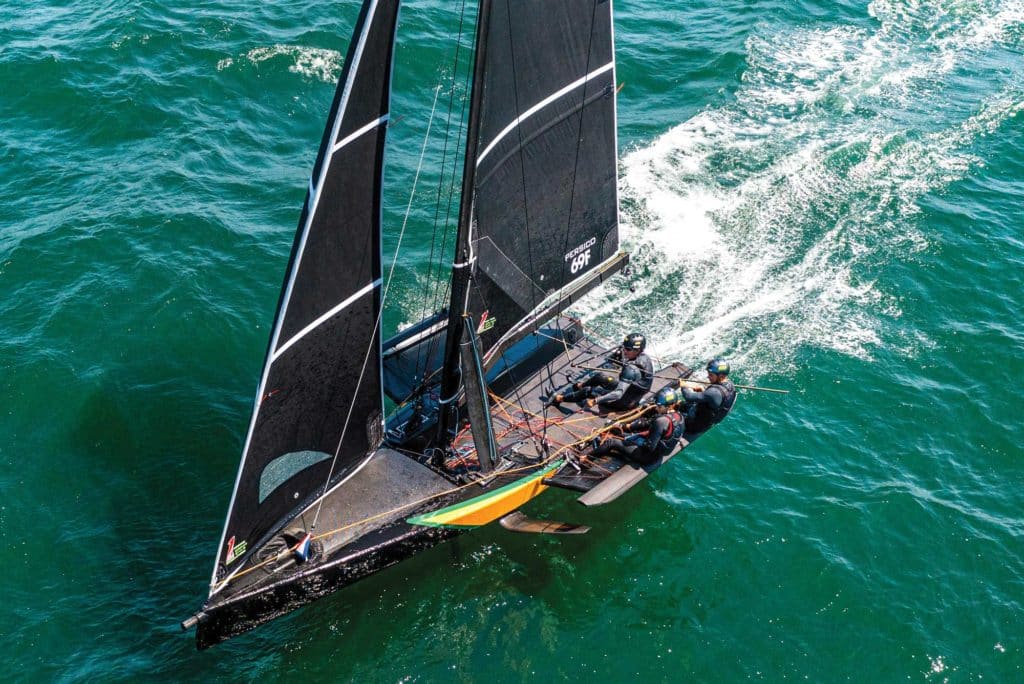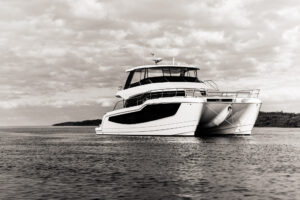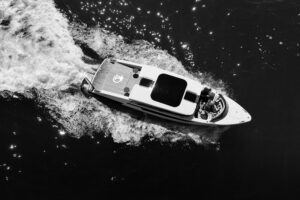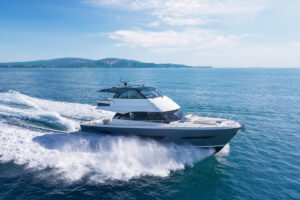
There’s a revolution underway in the sport of sailing, and it can be summed up in one simple word: foiling.
More specifically, we’re talking about hydrofoils, the winglike appendages mounted beneath the hull of a vessel that, at a certain speed, lift the hull clear of the water. When this happens, the foiling sailboats can reach speeds two or even three times faster than possible in “displacement” mode.
And sailboats are just one element of the foiling revolution: Surfboards, paddleboards and powerboats are also getting in on the act.
An Italian naval architect named Enrico Forlanini is credited with developing the first waterborne hydrofoils, which he affixed to a 60 hp, airscrew-driven craft that topped off at 36.9 knots back in 1906. In the century that followed, a series of would-be inventors took a swing at the concept with varying degrees of success. Foiling sailboats finally ascended into the mainstream during the 2013 America’s Cup, when Oracle Team USA beat Emirates Team New Zealand in a match between foiling 72-foot catamarans (the Cup has been contested in foiling cats ever since).
Surprisingly enough, my first foiling experience happened some three decades ago, aboard something called a Hobie TriFoiler, from the popular manufacturer of Hobie surfboards, beach cats and kayaks. The TriFoiler, basically a 22-foot trimaran with a central pod and a pair of mainsails stepped on the twin outriggers, was invented by a fanatical California engineer named Greg Ketterman. The sail controls were laid out just forward of the tiny airplane-style cockpit; you steered with foot pedals. It was so ridiculously easy that even a gremmie like me had the thing foiling within moments of getting in and reaching off.
But after the initial thrill, it was actually kind of boring. Which, I believe, is why it went out of production soon after. The TriFoiler was, unfortunately, way ahead of its time.
Such was the extent of my personal foiling experience until this past summer, when a new class of foiling monohull skiffs called Persico 69Fs rolled into my home waters for a series of races among youth squads in the class’s inaugural season. I got an invitation to take a spin.
After donning my helmet, wetsuit and life jacket, I was handed the helm with a pair of skilled young sailors on board. At 25 knots, we were towed into Narragansett Bay behind a powerful RIB, foiling all the way. It was terrifying. And a preview of coming attractions.
Once the tow dropped us, the sails went up and we bore off. I skied the tiller extension while scrambling out onto the hiking racks. Which sent us off on a screaming reach. Which flipped the 22-foot-7-inch carbon rocket ship.
Twenty seconds into foiling, and I’d capsized the bloody thing. How embarrassing.
The kids, bless them, were kind and patient. We got the whole shooting match, including ourselves, back upright and tried again. The mainsail trimmer sheeted it home, we started to accelerate, and he said: “Here we go! You’re up. You’re flying!” Indeed, we were.
Hard on the breeze in the 12-knot southwesterly, things unfolded quickly. Spray was flying, and I took more than one solid wave to the kisser. I was mostly too frightened to concentrate on anything but driving, but I did glance at the speedo once: 17.4 knots. (I felt pretty chuffed until later learning a 69F’s top speed is 34 knots. Ugh.)
However, I guess I’d proved the point: With a couple of sailors who know what they’re doing, foiling is for everyone. From now on, just call me Mr. Foiler.









